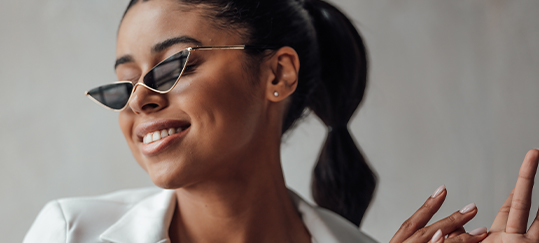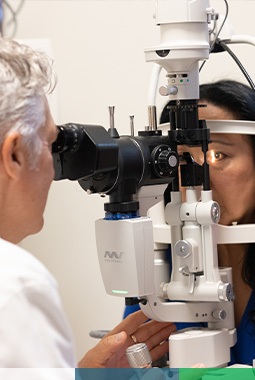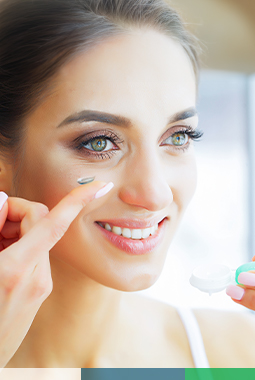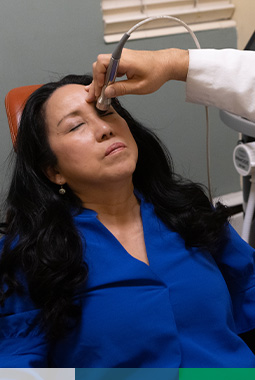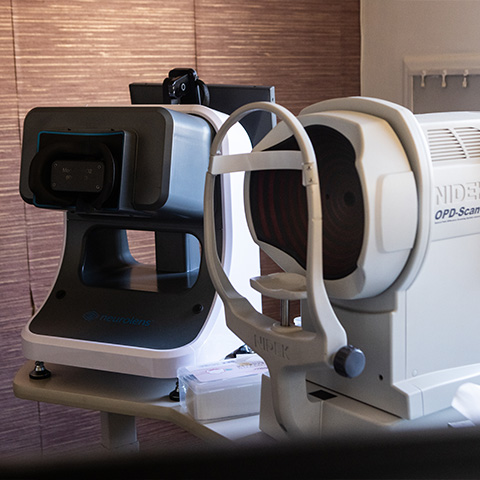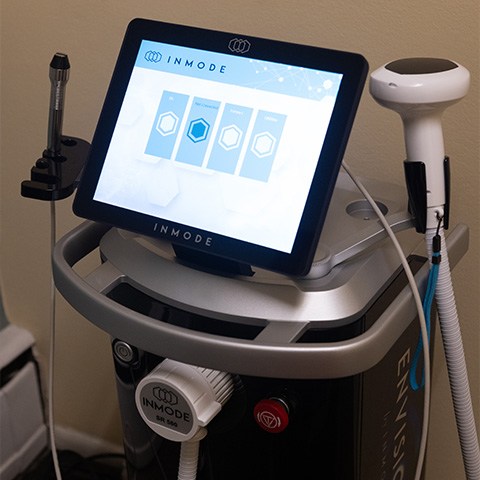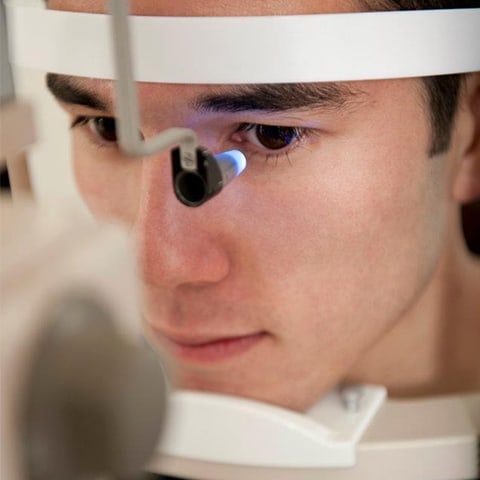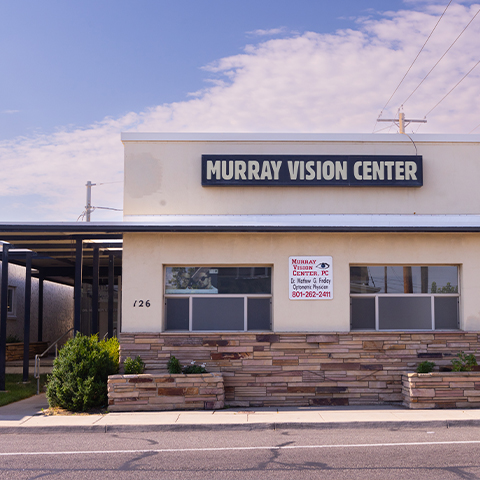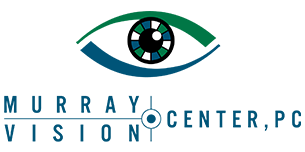Personalized Treatment Plans for Dry Eye Relief
Dry eye is a common condition that can significantly impact your quality of life. Symptoms like blurry vision, eye irritation, and watery eyes can reduce your productivity, and our team wants to help you find relief and comfort!
Dry eye is often caused by issues that affect your tears, causing you to make less tears or causing the quality of your tears to change. At Murray Vision Center, PC, we offer comprehensive dry eye evaluations and personalized treatment plans to address the root causes of this condition.
It all starts with a comprehensive eye exam—contact us to schedule your appointment today.
Request Appointment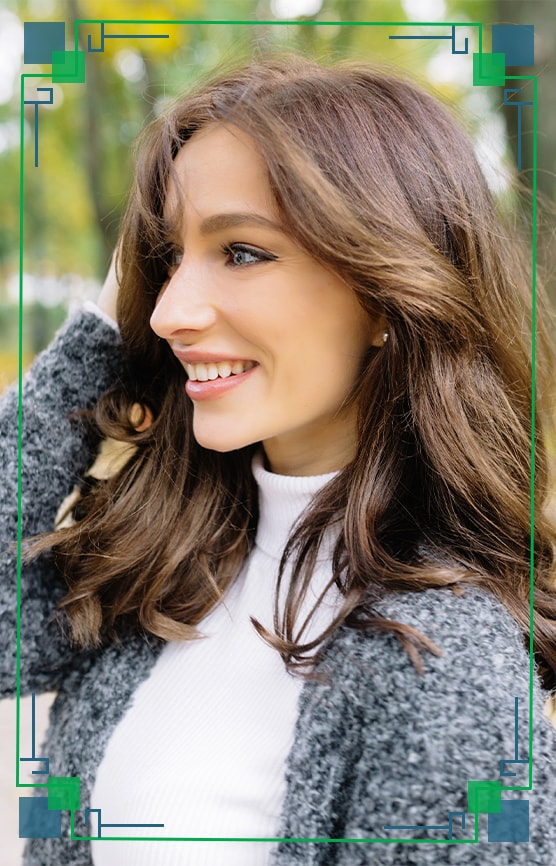
How Dry Eye Develops
Your eyes need tears to stay healthy. Your tear film covers the surface of your eyes to protect and nourish them. It is made of 3 layers:
- The oily outer layer
- The watery middle layer
- The inner mucus layer
When there’s an issue with any 1 of these layers, you can develop dry eye symptoms.
Common Symptoms of Dry Eye
To help you be prepared for managing dry eye, it’s important to recognize some of the common symptoms, which can include:
- Stinging or gritty eyes
- Scratchy and uncomfortable eyes
- Fluctuating vision
- A burning feeling
- The feeling of something in the eye
Early treatment is important for managing dry eye and reducing the risk of complications. We want to help you get relief quickly so you can get back to your day-to-day life.
What Is Meibomian Gland Dysfunction?
Meibomian gland dysfunction (MGD) is a chronic and progressive condition affecting the function of the tiny meibomian glands that line your eyelids. These glands produce the tear film’s oily layer, which is essential for preventing your tears from evaporating too quickly.
MGD symptoms include:
- Watery eyes
- Fluctuating or blurry vision
- Discomfort wearing contact lenses or eye makeup
We use IPL therapy to address MGD by gently stimulating your meibomian glands, helping release the oils your eyes need.
Dry Eye Screenings & Diagnostics
We believe in early detection and treatment of dry eyes, so we perform dry eye screenings for adults and children as part of our routine eye exams.
We implement different diagnostic tools into our exams to assess your eye health and identify the factors contributing to your dry eye symptoms.
Meibography
Meibography is a noninvasive imaging technique that captures detailed images of the meibomian glands, which are responsible for producing the oily layer of your tear film. By examining these glands, we can identify issues such as gland loss, inflammation, or blockages that may contribute to dry eye symptoms.
Dyes & Staining
To evaluate the health of your cornea and conjunctiva, we use special dyes that highlight areas of inflammation, damage, or dryness. These stains help us identify potential issues such as corneal abrasions, dry spots, or allergic reactions.
Subjective Tear Breakup Time (TBUT)
TBUT measures the length of time tears remain intact on the surface of the eye before breaking up. A shorter TBUT indicates increased tear evaporation, a common symptom of dry eye. By measuring your TBUT, we can assess the stability of your tear film and determine the severity of your dry eye condition.
Schirmer’s Test
Schirmer’s test measures tear production by placing small strips of filter paper in the lower eyelid. The amount of wetted paper after a specific period indicates your tear production rate. A decreased tear volume is often associated with dry eyes. This test helps us determine if reduced tear production is contributing to your symptoms.
Nutritional & Holistic Approaches
We believe in a holistic approach to dry eye treatment. Our initial treatment often includes dietary recommendations and the use of omega-3 supplements. Based on the response, we may proceed with other treatments as necessary.
Every patient at Murray Vision Center, PC receives personalized care. We screen all our patients for dry eye and will provide detailed explanations of your condition, including showing you your tear breakup time and discussing the structure of your meibomian glands.
Tailored Treatment Plans
Following your dry eye screening, our team can begin preparing a treatment plan. We understand that dry eye is a complex condition with a variety of underlying causes.
That’s why we offer a comprehensive approach to treatment, focusing on addressing the root causes and providing relief from your symptoms.
Your environment and other risk factors, such as exposure to dry air or wind, long-term contact lens wear, and digital eye strain, can increase the chances of dry eye development, and we take all that into account when determining which treatment is right for you.
InMode IPL
IPL therapy uses intense pulsed light to target the root causes of dry eye, including inflammation and meibomian gland dysfunction.
By gently heating the eyelid tissue, IPL stimulates collagen production, reduces inflammation, and improves oil secretion from the meibomian glands.
This approach helps restore the delicate balance of your tear film and address your dry eye symptoms.
InMode Radiofrequency
Radiofrequency treatments target the root cause of dry eye by focusing on the meibomian glands. By gently heating the glands, radiofrequency therapy can help unclog blockages, improve oil quality, and restore your eyes’ natural moisture balance.
Radiofrequency treatments can help reduce inflammation, improve tear quality, and provide lasting relief.
Meibomian Gland Expression
Meibomian gland expression is a noninvasive procedure that involves applying gentle pressure to the meibomian glands. Expressing the oil in your eyelids can help the quality and quantity of your tears improve, reducing dry eye symptoms such as irritation, fatigue, and watery eyes.
Punctal Plugs
Punctal plugs are small devices inserted into the tear ducts to temporarily block the drainage of tears. This can help increase tear volume and reduce dry eye symptoms.
Lifestyle Modifications
Simple changes to your daily routine can make a significant difference in managing dry eye.
These may include:
- Hydration: Increasing your fluid intake to maintain overall hydration.
- Digital eye strain reduction: Taking breaks from screens, using blue light filtering glasses, and adjusting screen brightness and contrast.
- Environmental control: Using humidifiers to increase moisture in the air, especially during dry seasons.
Other Treatments
We also offer other treatment options, such as:
- Prescription eye drops
- Warm compresses and eye masks
- Omega-3 supplements
- Serum tears
- And more!
Addressing Your Dry Eye Needs
Dry eye can be a difficult condition to manage, but our team is here to help. We offer comprehensive dry eye screenings, thorough diagnostics, and tailored treatment methods.
Contact us to schedule your appointment today and discover how we can help you get your comfort and eye health back from dry eyes.
Request AppointmentVisit Our Location
Our clinic is located East from the New Murray City Hall on 4800 South. We look forward to welcoming you and your loved ones!

Our Address
- 126 East 4800 South
- Murray, UT 84107
Contact Information
- Phone: 801-262-2411
- Email: [email protected]
Hours of Operation
- Monday: 9:00 AM – 5:00 PM
- Tuesday: 9:00 AM – 5:00 PM
- Wednesday: 9:00 AM – 5:00 PM
- Thursday: 9:00 AM – 5:00 PM
- Friday: 9:00 AM – 5:00 PM
- Saturday: Closed
- Sunday: Closed
Our Brands

